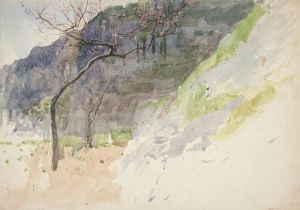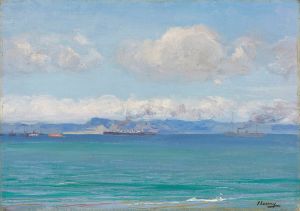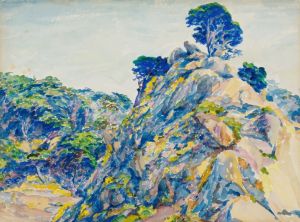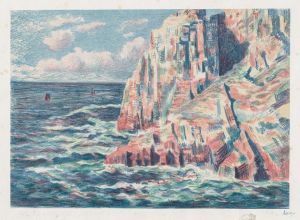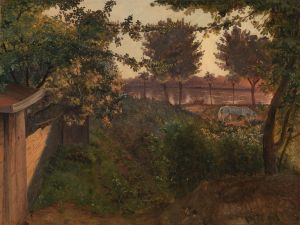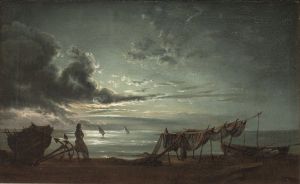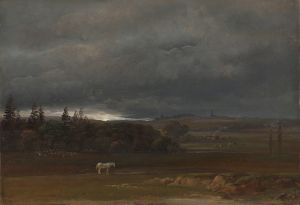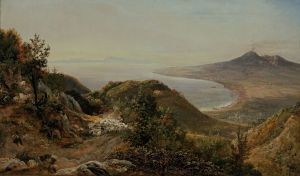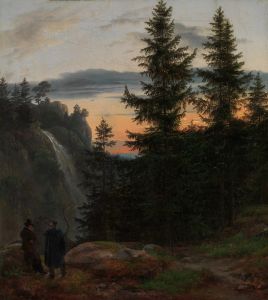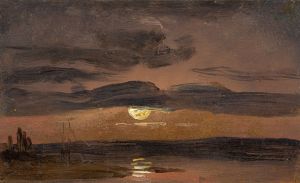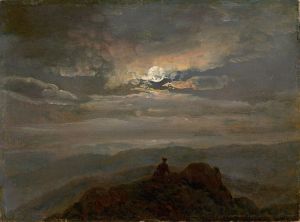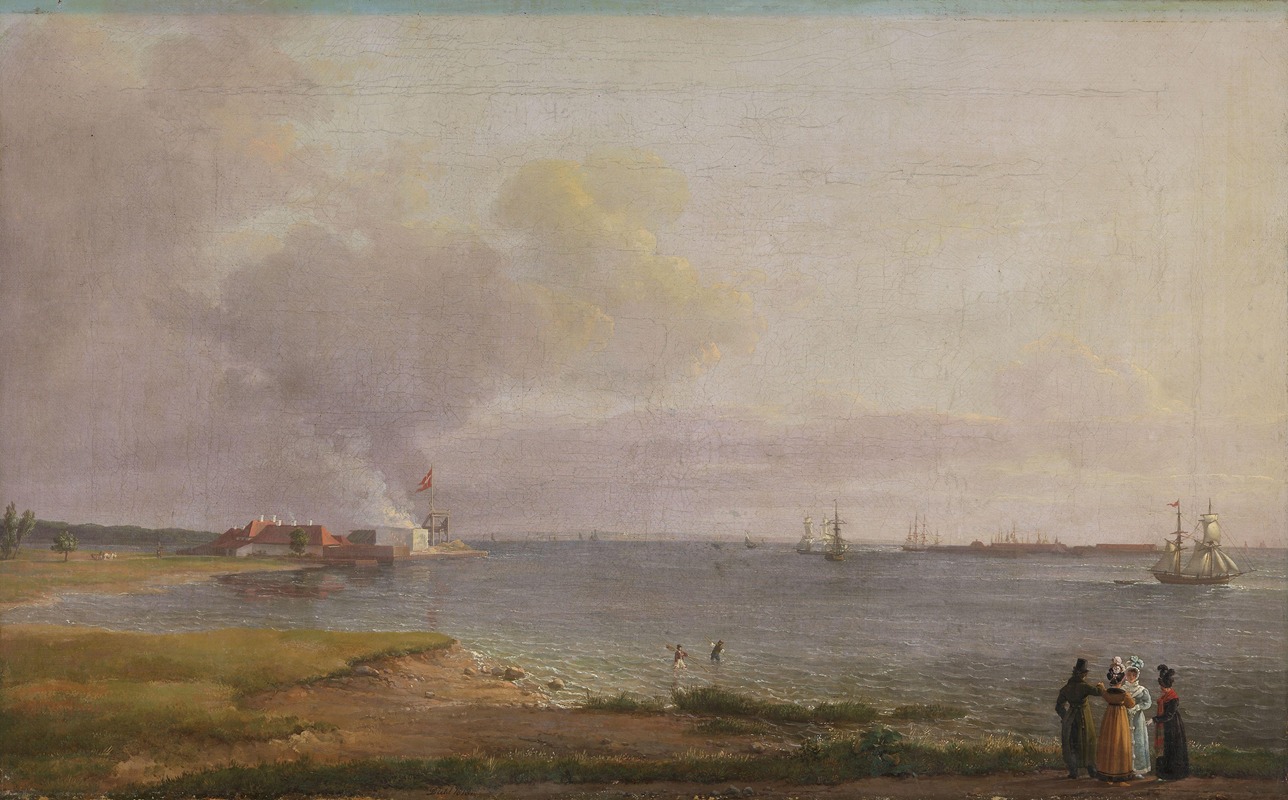
View over Øresund near the Lime Works
A hand-painted replica of Johan Christian Dahl’s masterpiece View over Øresund near the Lime Works, meticulously crafted by professional artists to capture the true essence of the original. Each piece is created with museum-quality canvas and rare mineral pigments, carefully painted by experienced artists with delicate brushstrokes and rich, layered colors to perfectly recreate the texture of the original artwork. Unlike machine-printed reproductions, this hand-painted version brings the painting to life, infused with the artist’s emotions and skill in every stroke. Whether for personal collection or home decoration, it instantly elevates the artistic atmosphere of any space.
Johan Christian Dahl, a prominent Norwegian painter, is often regarded as a leading figure in the development of Romantic landscape painting in Norway. His work, "View over Øresund near the Lime Works," exemplifies his skill in capturing the natural beauty and atmospheric conditions of the Scandinavian landscape. Painted in 1840, this artwork reflects Dahl's deep appreciation for nature and his ability to convey its grandeur and subtlety.
The painting depicts a serene view over the Øresund, the strait that separates Denmark from Sweden. This body of water has historically been a significant maritime route, and its surrounding landscapes have inspired many artists. In Dahl's portrayal, the viewer is presented with a tranquil scene that emphasizes the vastness of the sky and the gentle movement of the water. The composition is balanced, with the horizon line placed strategically to draw attention to both the sky and the sea.
Dahl's technique in this painting is characteristic of his broader oeuvre. He employs a meticulous attention to detail, particularly in the rendering of light and shadow. The play of light across the clouds and water surface is executed with precision, creating a dynamic yet harmonious effect. This attention to atmospheric conditions is a hallmark of Dahl's work, reflecting his interest in the changing moods of nature.
The lime works mentioned in the title refer to industrial sites that were common in the region during the 19th century. These sites were involved in the extraction and processing of limestone, a key material for construction and other industries. While the lime works themselves are not prominently featured in the painting, their inclusion in the title suggests their significance to the area and possibly to the economic activities of the time.
Dahl's ability to integrate elements of human activity within the natural landscape without disrupting the overall harmony is evident in this piece. The painting does not overtly focus on industrialization, but rather subtly acknowledges its presence within the natural world. This approach is consistent with the Romantic movement's emphasis on the sublime and the coexistence of humanity and nature.
Throughout his career, Dahl was influenced by his travels across Europe, particularly his time spent in Dresden, Germany, where he became associated with the Dresden Academy of Fine Arts. His exposure to the works of other Romantic painters, such as Caspar David Friedrich, informed his own artistic development. However, Dahl maintained a distinct style that was deeply rooted in his Norwegian heritage and his personal experiences with the landscapes of Scandinavia.
"View over Øresund near the Lime Works" is a testament to Dahl's mastery of landscape painting and his ability to evoke a sense of place and atmosphere. It reflects both the natural beauty of the Øresund region and the subtle interplay between nature and human industry. As with many of Dahl's works, this painting invites viewers to contemplate the majesty of the natural world and the ways in which it shapes and is shaped by human presence.
Today, Johan Christian Dahl is celebrated as a pioneer of Norwegian landscape painting, and his works continue to be studied and admired for their technical skill and emotional depth. "View over Øresund near the Lime Works" remains an important example of his contribution to the Romantic movement and his enduring legacy in the world of art.





